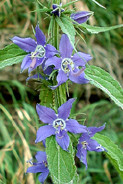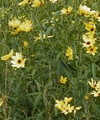 Loading... Please wait...
Loading... Please wait...- Home
- SEEDS
- SEED MIXES
- BUY PLANTS
- Info Request
-
Educational Videos
- Greenhouse Transplanting Demonstration
- Native Seed Cleaning demonstration at Ion Exchange Native Seed and Plant Nursery
- Attracting Butterflies
- Bidens - Bidens cernua Harvest Video
- Big Blue Stem Harvest
- Butterfly Milkweed Video
- Button Blazingstar - Liatris aspera Video
- Buttonbush - Cephalanthus occidentalis Video
- Canada Anemone - Anemone canadensis Harvest Video
- Cardinal Flower - Lobelia cardinalis Video
- Control Burn - Wildflower Field
- Cream Gentian - Gentiana flavida
- Culver's Root - Veronicastrum virginicum Video
- Cup Plant - Silphium perfoliatum Video
- Dormant Seeding | Planting
- Earthyman's Favorite Wildflowers Video
- Eco-Friendly Golf Course Seed Mix
- Floating Islands
- Fringed Loosestrife - Lysimachia ciliata Video
- Giant Yellow Hyssop - Agastache nepetoides Video
- Indiangrass - Sorghastrum nutans Video
- Iowa Prairie Partner Program
- Leadplant - Amorpha canescens (Potted) Video
- Meadow Blazingstar - Liatris ligulistylis
- Midland Shooting Stars - Dodecatheon meadii Video
- Native Plant Nursery Field Irrigation Experiment
- Nodding Onion - Allium cernuum Video
- Ohio spiderwort - Tradescantia ohiensis Video
- Old Man's Beard - Clematis virginiana blooms Video
- Oxeye Sunflower - Heliopsis helianthoides Video
- Prairie Spiderwort - Tradescantia bracteata
- Purple Coneflower - Echinacea purpurea Video
- Rain Garden or Water Garden Video
- Rattlesnake Master - Eryngium yuccifolium Video
- Riverbank Stabilization - Wetland Plants
- Rose Mallow - Hibiscus militaris Video
- Rosinweed - Silphium integrifolium Video
- Royal Catchfly - Silene regia
- Showy Tick Trefoil - Desmodium canadense Video
- Sneezeweed - Helenium autumnale Video
- Swamp Betony - Pedicularis lanceolata Video
- Swamp Milkweed - Asclepias incarnata Video
- Sweet Blackeyed Susan - Rudbeckia subtomentosa Video
- Tall Coreopsis - Coreopsis tripteris Video
- Urban Butterfly Garden
- Wild Bergamot - Monarda fistulosa Video
- Wild Geranium - Geranium maculatum Harvest
- Wild Goldenglow - Rudbeckia lanciniata Video
- Wild Petunia - Ruellia humilis Harvest Video
- Woodland Knotweed - Polygonum virginianum Video
- Yellow Coneflower - Ratibida pinnata Video
- Blog
- Resources
- Policies
Contact Us
Phone:
563-419-0837
or 563-535-7231
Email:
hbright@ionXchange.com
Browse Products
Add to Wish List
You Recently Viewed...
Our Newsletter
Product Description
Campanula comes from the Latin campana and means "little bell". Americana means "of America" meaning the first identification of this species happened in America.
Many branches on a slender, straight stem produce these striking flowers blooming from June through the first frost. The plants can reach 6 feet and have alternating, hairy, lanceolate leaves with pointed tips. One of the few annuals in this genus.
Tall Bellflower (Campanula Americana) from a distance it can be easily confused with Lobelia siphilitica.
From a distance it can be easily confused with Lobelia siphilitica.
Prefers rich, moist thickets and woods from Ontario and New York south to Florida, west to Louisiana and Oklahoma, and north to South Dakota and Minnesota.
A tea brewed from the leaves of this plant was occasionally used in early medicine to relieve persistent coughing. The Meskwaki of Iowa and the Upper Midwest used the same tea to treat consumption.
A European relative (C. rapunculoides), the "Rampion" is widely cultivated for the use of it's radish-like tuber and leaves in salads. Occasionally, we can find stands of that species here in Iowa due to its escape from early pioneer gardens.
| Sun Exposure | Savanna, Woodland |
| Soil Moisture | Wet Mesic, Mesic, Dry Mesic, |
| Bloom Time |
Summer, Fall |
| Bloom Color | Blue |
| Max Height | 5 feet |
| Wetland Code | FACU |
| Germ Code | C(30),D |
| Seeds Per Packet | 1,000 |
| Seeds Per Ounce | 170,000 |
Edible Uses: Unknown
Medicinal Uses: Unkown
Herbal Uses: Unkown












